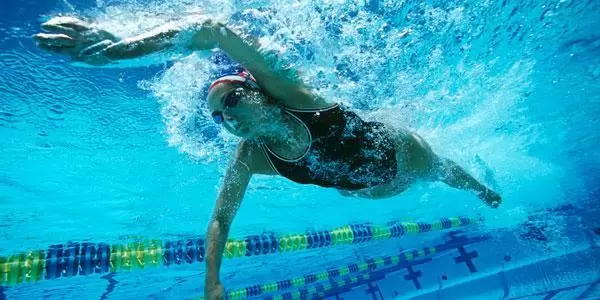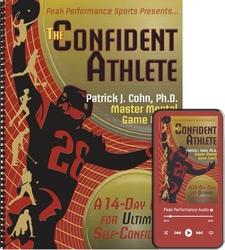
Goal Getting for Athletes
Have you ever wondered why you might fall short of your goals? Some athletes consistently miss the mark and fail to achieve their athletic dreams. The reason is that those dreams are merely hopes, not goals.
Think of this scenario; you are a swimmer who wants to make a national cut in the 100-yard freestyle. You know you have to break 46 seconds but are unsure of the exact time standard.
You are not even sure of the best race strategy for yourself. With no clarity, you have minimal direction in your training. Do you think the chances would be in your favor to make Nationals?
Hope lacks clarity.
A goal is clearly defined. Goals provide a very specific target. For example, a basketball player can set a goal to increase his free throw percentage from 85% to 87% for the season.
The goal identifies the starting point and the desired destination. The goal can be measured and has a completion date (the end of the season). Hope lacks planning.
A goal has a detailed action plan. A goal plan is a set of instructions or steps that, when acted upon, move you in the direction of your goal. The plan could include taking 50 extra free throws after practice, 3 x per week, and working with your coach on technique. Hope lacks effort and relies on luck.
Goals require action every day, not just any action, but a focused effort in line with your goal plan. Goal plans are flexible and can change due to their lack of effectiveness or changing circumstances.
Goals require an assessment of progress and adjustments when necessary.
In our basketball example, a wrist injury can interrupt a player’s progress. Still, players could adjust their plan by replacing practice with rehab and adding visualization sessions to improve performance.
The following is an excellent example of practical goal setting and flexibility…
Steele Johnson is a six-time individual and eight-time synchro U.S. champion diver at the senior level. At the Olympic Games Rio 2016, Johnson earned a silver medal at his Olympic debut in 10-meter synchro with partner David Boudia.
Johnson continues to pursue his goals with focus, effort, and flexibility…
JOHNSON: “Just because my goals did not change doesn’t mean that my process of achieving those goals will be the same. 2020 brought a lot of adjustment that I believe helped me learn how to maintain focus in the midst of adversity. It is important to have a plan of action, but it is even more important to hold that plan with an open hand.“
Achieving your goals requires a clear target, planning, focused effort, evaluation, and adjustment. If you neglect one area, you are drastically reducing your chances of accomplishing your goals.
Setting and Achieving Goals
Defining your goals is just the start of the process. The work begins after you have clearly stated your goals for your game. Now the hard work… Goal getting!
After you clearly define your goal, it’s time to plan, act, evaluate, adjust (when necessary) and repeat.
Think of each practice day as a day to strive for your goals. Set objectives each day to help you go after your goals. This step is often overlooked by athletes and is the reason most athletes don’t reach goals.
Setting and getting to your goals is an active and fluid process.
Related Articles:
- Sports Psychology And Goal Setting
- One Strategy That Helps All Athletes While Self-Isolating
- How Expectations Can Hurt Your Performance in Volleyball
*Subscribe to The Sports Psychology Podcast on iTunes
*Subscribe to The Sports Psychology Podcast on Spotify
Download a free sports psychology report to improve your mental game!
Learn more about our one-on-one mental game coaching.
The Confident Athlete

“The Confident Athlete” consists of 2 audio programs that include 14 days of confidence fueling exercises and a simple to follow workbook that guides you through the 14 days, helps you apply the strategies, and customizes the exercises to your personal needs.
Let me help you put a stop to the confidence leak. You can learn to have greater levels of confidence in competition than you do in practice by identifying the specific ways you undermine your own confidence and how to convert your practice confidence into COMPETITIVE CONFIDENCE.
“The Confident Athlete” is a ground-breaking system to teach you how to think like a champion and have ultimate self-confidence every time you step on the playing field, court, track, or course. The confident athletes was developed for any athlete – junior to professional –that wants to gain confidence. However, coaches and sports parents can learn how to teach others to perform with ultimate confidence. Use my program if you want to bust a slump or just wanting higher or more consistent levels of self-confidence.
